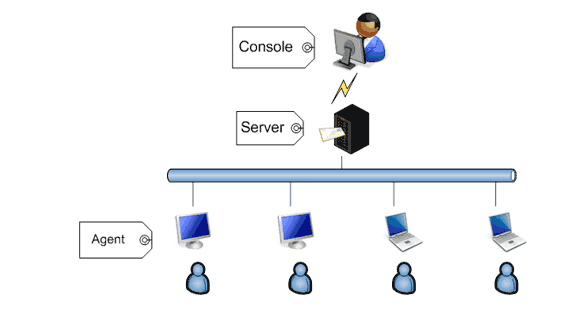AnySecura - Network Management Software
AnySecura spy software records and controls all computer and Internet activities - emails, web sites, chats and instant messages, program activities, document operations, removable devices, printers, and many more.
Features
- Take Screen Snapshots
- Email Monitoring
- Instant Message Monitoring
- Website Visit Monitoring
- Application Monitoring
- Document Monitoring
- Printing Monitoring
- Network Monitoring
- Computer Maintenance
- Data & User Management
Resources
- Complete Online Guides
- Video Tutorials
- SurveilStar Testimonials
- Deploying SurveilStar
- SurveilStar Home Edition
- Free Activity Monitor
- Free Email Recording
- SurveilStar Press Release
- Version Comparison
- Feature Module Comparison
- 日本語
- français
Topics
Network management refers to the activities, methods, procedures, and tools that pertain to the operation, administration, maintenance, and provisioning of networked systems. The network management feature of AnySecura enables IT administrator to monitor network status in real-time, and quickly diagnose and fix network problems.
Administrator can allocate different bandwidth to different users/computers; block FTP/P2P file transfer, and control file sharing over network.
Network Traffic Policy is used to control and allocate corporate network bandwidth. The bandwidth can also be controlled based on the specified IP range or network port. AnySecura can allocate different bandwidth to different users, or completely block certain user’s connection to LAN and the Internet.
For instance, if you find some guy is occupying too much network bandwidth downloading a 4.7G high definition movie, you can temporarily limit his download speed to 0K/s, or 5K/s, if you are generous enough. At the meantime, AnySecura can also send a warning message to the trouble-maker to stop abuse the network.
Functions that are performed as part of network management accordingly include controlling, planning, allocating, deploying, coordinating, and monitoring the resources of a network, network planning, frequency allocation, predetermined traffic routing to support load balancing, cryptographic key distribution authorization, configuration management, fault management, security management, performance management, bandwidth management, and accounting management.
Controlling network traffic
AnySecura provides easy ways for controlling network traffic:
1. Select IP range: All, or specified IP range
2. Select port range: All, or specified Port range
3. Select direction: Total Bandwidth = Traffic (Sent) + Traffic (Received)
4. Assign speed limit: To limit the bandwidth speed, unit is KB/s.
Network management
Reduce costs, improve efficiency with AnySecura.
Operation deals with keeping the network (and the services that the network provides) up and running smoothly. It includes monitoring the network to spot problems as soon as possible, ideally before users are affected.
Administration deals with keeping track of resources in the network and how they are assigned. It includes all the "housekeeping" that is necessary to keep the network under control.
Maintenance is concerned with performing repairs and upgrades - for example, when equipment must be replaced, when a router needs a patch for an operating system image, when a new switch is added to a network. Maintenance also involves corrective and preventive measures to make the managed network run "better", such as adjusting device configuration parameters.
Provisioning is concerned with configuring resources in the network to support a given service. For example, this might include setting up the network so that a new customer can receive voice service.
Data for network management is collected through several mechanisms, including agents installed on infrastructure, synthetic monitoring that simulates transactions, logs of activity, sniffers and real user monitoring. In the past network management mainly consisted of monitoring whether devices were up or down; today performance management has become a crucial part of the IT team's role which brings about a host of challenges -- especially for global organizations.

